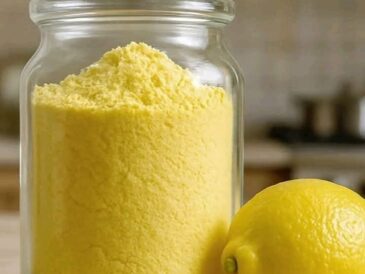Growing marigolds alongside tomatoes is a tried-and-true gardening technique that brings numerous benefits to both plants, including improved health, increased yields, and reduced pest damage. Marigolds, known for their vibrant, cheerful flowers, are one of the most popular companion plants, but they are far from the only ones that can help tomatoes thrive. Companion planting is a method used by gardeners worldwide to improve the growing conditions for plants, encourage natural pest control, and boost soil health.
Here’s why marigolds are such an excellent companion for tomatoes, followed by a list of 20 other companion plants that can help enhance your garden’s productivity and health.
Why Marigolds Are Beneficial for Tomatoes
1. Natural Pest Repellent
Marigolds are incredibly effective at repelling certain types of pests, which is one of the primary reasons they are planted alongside tomatoes. They release a chemical called alpha-terthienyl, which is toxic to nematodes, whiteflies, and aphids—common pests that damage tomato plants. Their strong scent also keeps pests at bay, preventing them from attacking your tomato crops.
2. Attracting Beneficial Insects
The bright, fragrant flowers of marigolds attract a wide range of beneficial insects, including pollinators like bees and predatory insects such as ladybugs. Ladybugs, in particular, feed on aphids and other harmful pests that can damage tomato plants. By drawing these helpful insects into your garden, marigolds improve your chances of maintaining a healthy and thriving tomato crop.
3. Improves Soil Health
Marigolds can also help improve the soil quality around your tomato plants. The roots of marigolds contain natural compounds that suppress certain soil-borne diseases, which can be harmful to tomato plants. Furthermore, marigolds improve soil structure by loosening the soil, allowing better water absorption and air circulation to the roots of your tomato plants.
4. Acts as a Barrier
Marigolds not only act as a pest repellent but also create a physical barrier around your tomatoes. Their strong scent can mask the smell of tomato plants, making it harder for pests to locate your crops. In this way, marigolds serve as both a visual and olfactory deterrent to pests, helping keep your tomatoes safe and healthy.
5. Adds Beauty to the Garden
Aside from their functional benefits, marigolds add beauty and color to your garden. Their vibrant blooms can brighten up any garden, making them a fantastic ornamental choice. Growing marigolds alongside tomatoes enhances the aesthetic appeal of your garden while providing practical advantages.
20 Other Companion Plants for Tomatoes
Marigolds are just one example of how companion planting can improve your garden. Here are 20 other plants that make excellent companions for tomatoes, helping to protect, nourish, and boost the growth of your crops.
1. Basil
Basil is an excellent companion plant for tomatoes, enhancing their flavor and aroma. In addition to making tomatoes taste better, basil helps repel pests like whiteflies and mosquitoes. It also attracts pollinators, which helps improve fruit production.
2. Parsley
Parsley attracts predatory insects like hoverflies and ladybugs, which feed on aphids and other pests that may target your tomato plants. It’s a great addition to your garden, helping to keep tomato pests under control naturally.
3. Garlic
Garlic is an effective natural pest repellent. Its pungent smell deters aphids, spider mites, and whiteflies, all of which can cause damage to tomato plants. Garlic also helps prevent fungal infections, such as blight, in tomatoes.
4. Chives
Chives are a great companion for tomatoes as they help deter aphids and beetles. The flavor of chives can also enhance the taste of tomatoes in culinary applications. Plus, they don’t compete for nutrients with tomatoes, so they’re easy to grow alongside them.
5. Nasturtiums
Nasturtiums are another great companion plant that acts as a trap crop. They lure aphids and whiteflies away from your tomatoes. Additionally, the flowers are edible and add a peppery flavor to salads, providing an extra benefit for gardeners.
6. Borage
Borage attracts bees and other pollinators, which are essential for the success of tomato plants. This herb also improves soil health by enriching the soil with beneficial nutrients. Borage is also thought to deter tomato hornworms, a common pest that feeds on tomato plants.
7. Carrots
Carrots and tomatoes make great companions as they have complementary growing habits. Carrots help loosen the soil around tomato roots, which improves aeration and water absorption. Both crops also have similar watering needs, making them compatible.
8. Lettuce
Lettuce grows well in the partial shade of tomato plants, making it an excellent choice for maximizing garden space. Lettuce also helps retain soil moisture, which can benefit the roots of both crops during hot weather.
9. Spinach
Like lettuce, spinach thrives under tomato plants, taking advantage of the partial shade provided by the taller tomato vines. It also prevents soil erosion, helping to maintain a healthy growing environment.
10. Onions
Onions help repel aphids, mites, and other pests with their strong aroma. They don’t compete for nutrients with tomatoes, making them an ideal companion plant. Additionally, onions and tomatoes can be harvested at different times, allowing you to make the most of your garden space.
11. Cilantro
Cilantro attracts beneficial insects like parasitic wasps and hoverflies, which help control tomato pests. The herb also thrives in the same growing conditions as tomatoes and can be harvested throughout the growing season.
12. Dill
Dill is another great herb to grow with tomatoes, as it repels aphids and spider mites while attracting tomato hornworm predators. However, dill can grow large, so it’s important not to plant it too close to tomatoes, as it could stunt their growth.
13. Mint
Mint is a strong-smelling herb that repels aphids, whiteflies, and flea beetles, all of which can damage tomato plants. Be cautious when growing mint, though, as it spreads aggressively and can quickly take over your garden if not contained.
14. Celery
Celery grows well alongside tomatoes because it shares similar growing conditions, such as a preference for moist soil. It also helps repel pests like the cabbage moth, which can target tomato plants.
15. Thyme
Thyme is a low-growing herb that works well as a ground cover plant around tomato plants. It acts as a natural pest repellent, particularly for whiteflies, and doesn’t compete with tomatoes for sunlight, as it grows at ground level.
16. Cucumber
Cucumbers and tomatoes make great companions in the garden, as both crops thrive in similar conditions. While cucumbers need trellising to avoid overcrowding, they can provide beneficial ground cover, helping to improve microclimates for tomato plants.
17. Marjoram
Marjoram is a herb that enhances pollination and boosts the flavor of tomatoes. Its strong aroma attracts pollinators like bees, which are crucial for the production of fruit in tomato plants.
18. Peppers
Peppers and tomatoes thrive in similar conditions, making them a perfect pairing. They help deter pests like aphids and spider mites, which can be damaging to tomatoes. The two plants also have similar nutrient and watering needs.
19. Beans
Beans are nitrogen-fixing plants, meaning they help enrich the soil by adding nitrogen, an essential nutrient for tomato growth. Beans also provide shade for the soil, helping to retain moisture during hot weather, which benefits tomatoes.
20. Sunflowers
Sunflowers attract pollinators and beneficial insects, which help improve tomato yields. Their tall stalks can also act as natural trellises for sprawling tomato vines, providing support as the tomatoes grow.
Plants to Avoid Growing with Tomatoes
While companion planting can significantly enhance the health and productivity of your tomato plants, there are a few plants that should be avoided as companions due to their tendency to compete for nutrients, attract pests, or inhibit tomato growth.
- Corn: Corn attracts tomato pests, such as the tomato fruitworm, which can cause damage to your crop.
- Potatoes: Potatoes and tomatoes are both susceptible to the same diseases, such as blight, and should not be planted together.
- Cabbage Family (Broccoli, Cauliflower): These plants compete for nutrients, which can stunt tomato growth and affect their overall health.
- Fennel: Fennel produces chemicals that inhibit tomato growth and can stunt their development.
Conclusion
Growing marigolds alongside tomatoes, as well as using other companion plants, is an excellent way to create a harmonious and productive garden. Marigolds offer pest protection, attract beneficial insects, improve soil health, and beautify your garden. When combined with the 20 other companion plants listed here, your tomatoes will thrive, yielding healthy crops while reducing the need for chemical interventions. Whether you’re a novice or an experienced gardener, incorporating these plants into your garden will bring numerous benefits to your tomato plants and your overall garden ecosystem. 🌼🍅





